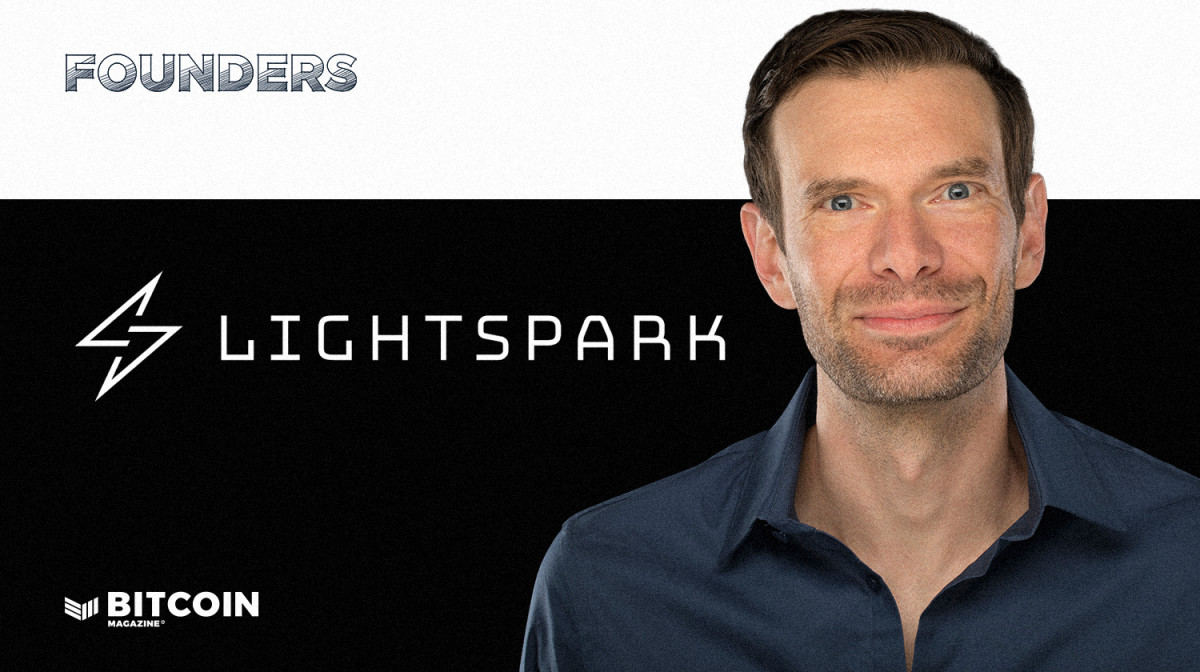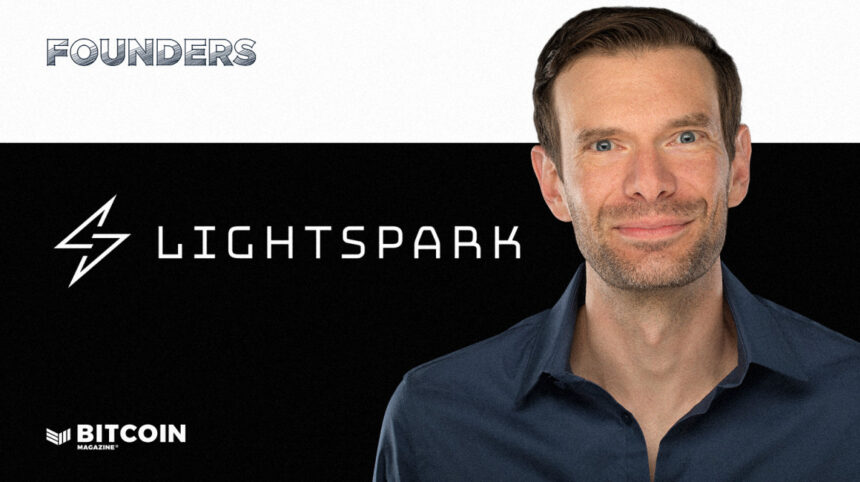
Company Name: Light Spark
Founder: David Marcus, Kevin Hurley, Christina Smedley, James Everingham, Christian Catalini, Jai Massari, Tomer Burell
Established date: April 2022; Series A May 2022
Headquarters: Los Angeles, California
Amount of Bitcoin held by the Treasury: N/A
Number of employees: 45
Website: https://www.lightspark.com/
Public or private? private
Kevin Hurley and team Light Spark We want to make it easier for institutions and everyday people to transfer value via Bitcoin.
So they developed Lightspark. Lightning Service Provider (LSP) It provides an enterprise-grade infrastructure that enables businesses and their customers around the world to make global payments using Bitcoin. Lightning Network.
“We want to continue the vision we had originally for Diem,” Hurley told Bitcoin Magazine, “which is to truly open up the financial world and make sending money as easy as sending a data packet today.”
Hurley also explained why the LightSpark team chose to build on top of Bitcoin:
“One of the things I learned from[Diem]is that you really need something that’s really decentralized, a neutral protocol, and you really need liquidity,” Hurley explained. “Those are key aspects of bitcoin and part of what makes it special.”
How does Lightspark work?
We see Lightspark as more than an LSP. Software Development Kit (SDK)These include liquidity management via routing nodes, a cloud-based node architecture, and API services that vendors can use to build specific features or utilise specific services.
The Lightspark SDK makes it incredibly easy for customers to access the Lightning Network for payments without the hassle that typically comes with using the network.
“We’re trying to abstract away all of the complexity of Lightning,” Hurley explains. “We’ve talked to a lot of companies that have been in the bitcoin space for a long time, trying to understand why they’re not using Lightning, or why they tried it and gave up, and we’ve heard the same thing every time: it’s just too complicated.”
To use Lightning without an LSP, a business would typically need employees dedicated to managing and rebalancing liquidity on their Lightning nodes. But with Lightspark, businesses can enable the Lightning network for payments with just a few lines of code provided by Lightspark. Lightspark handles all of the backend technical details. Additionally, Lightspark offers other features that institutions may find especially useful:
“We have compliance built into our stack,” Hurley said of how Lightspark helps companies stay compliant. FinCEN Travel Rule.
“We’re building AI on top of the stack to make sure payments are made with extreme certainty. We have Predict, which is like a Lightning version of Google Maps, that shows you where traffic jams are occurring and helps route transactions more reliably. Then we’re adding things like UMAs or universal money addresses, which allow you to send from any currency to any currency,” he added.
Universal Money Address (UMA)
One of the most notable features that Lightspark designed and open-sourced is UMA.
Lightspark allows businesses to provide their customers with a universal money address, which is Cash App $cashtag and email address (Example: $yourname@yourwallet/bank/exchange.com).
UMA allows users to seamlessly send crypto or fiat currency, albeit as a storage method.
Hurley explained how UMA was built to be interoperable. LNURL and Lightning AddressThe difference between LNURL and UMA is that UMA has its own way of sending fiat currency.
“UMA allows you to move from any currency to any other currency,” Hurley said.
“Let’s say I’m from Brazil and I want to send money to someone in Mexico. Let’s say I’m visiting Mexico and I go to a 7-Eleven and want to buy something. I need to be able to send money from my home currency to Mexican pesos,” he added.
“At UMA, Brazilian Real is instantly soilIt is streamed via Lightning and instantly converted from sweet potatoes to pesos and paid to 7-Eleven.”
One reason such transfers are lawful is that UMA facilitates the exchange of compliance data between the various agencies around the world that Lightspark works with.
The exchanges, neobanks and other institutions that Lightspark partners with (all of which are regulated Bitcoin/cryptocurrency custodians) hold the appropriate money transmission licenses in their respective jurisdictions, which ensures that Lightspark and its partners are compliant with the aforementioned travel rules.
LightSpark Partner Institutions
Lightspark recently joined forces with Coinbase, Xapo, and NubankAnd with every new partner that joins, more potential partners become interested.
“They’ve seen the growth and especially when we got into Coinbase, a lot of companies have come to us and are interested in what’s going on,” Hurley said.
“They see that larger companies are starting to get interested and real volume is starting to pick up, and they want to be involved. They understand this space is growing and becoming very important, and they don’t want to be left behind,” he added.
So far, most of the interest has come from more tech-oriented neobanks, which want to differentiate their offerings from traditional banks, but Hurley said big traditional banks are also taking notice.
“The benefits[Lightspark provides]are not just applicable to Nubank but also to JP Morgan,” Hurley explained.
“We’ve engaged with quite a few of them and they often need to see others do it first,” he added.
“Once it starts being implemented in practice, I think they’ll adopt it quickly.”
Hurley also noted that there are good reasons for large traditional financial institutions to get involved.
“Traditional financial institutions have big pain points,” Hurley explained.
“They may have bank accounts in multiple countries, and even within their own bank, transfers can take days. Quick“For example, if you send money from one institution in Argentina to one in Europe, it takes three to five days to transfer the money. That means they have to set up correspondent banks. This is a big burden for them and can get quite costly,” he added.
“I think they’re excited to see something that can work faster, more efficiently and has better rails. It’s a win-win for everybody.”
Bitcoin bulls keep a watch on reality
While Hurley and the LightSpark team believe Bitcoin adoption will continue to grow, they are also well aware that many people around the world still feel uneasy about using Bitcoin.
Hurley sees Lightspark’s approach as a way to increase Bitcoin adoption while keeping customers where they come from in mind.
“To really get adoption and continue to grow adoption, we need to understand where consumers are, but right now a lot of consumers are comfortable with fiat,” Hurley said.
“These people probably don’t know anything about bitcoin and it’s going to take them a while to get exposure to it, so if you can abstract that away for them and give them a currency that they’re comfortable with, it makes it easier for people to get on board and increases adoption,” he added.
That said, Hurley acknowledged that some people prefer to simply use bitcoin and ultimately use it in a non-custodial manner, and noted that Lightspark and its partners allow users to send bitcoin to non-custodial wallets if they so choose.
“Users can opt out of custody at any time and move to non-custodian,” Hurley said.
He noted that companies like Lightspark and those partnering with it are important right now because neither Bitcoin nor Lightning currently have the potential to be non-custodial and bring the masses onto the network.
“Right now, we can’t bring billions of users into Bitcoin or Lightning in a non-custodial way,” Hurley explained.
“In the long term, that could be possible and we’re doing a lot of research into how to make that happen, because we feel that it’s essential to the ecosystem,” he added.
But for now, Hurley sees custody solutions offered by companies like Cash App, Coinbase, and of course Lightspark as a way to get people to use bitcoin in an uncomplicated way.







